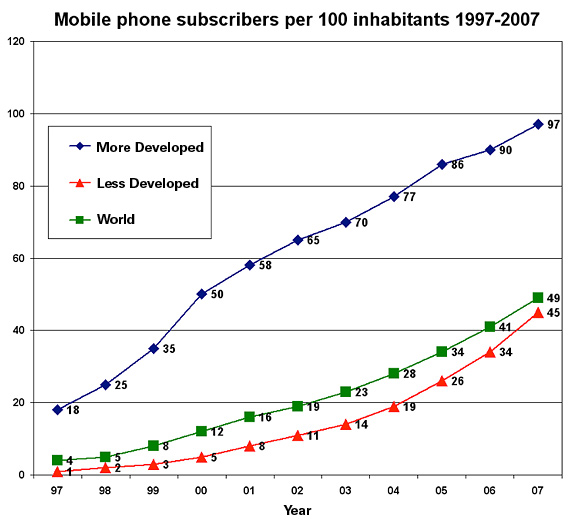



Countries with relatively low material well-being are sometimes called less developed countries. Less developed countries are countries that have low economic growth and little to no industrialization. In the previous section, you learned how to measure the level of development of a country.
Click on the factors below to learn more about less developed countries:
Less developed countries are located in eastern Europe, northern and southeastern Asia. Africa has less developed nations in some of its northern and sub-Saharan areas, as well as in the southern region. Many countries in Latin America are also considered less developed.
In many less developed countries there is a lack of technology and industrialization. Believe it or not, not all people have cell phones. The graph below compares mobile phone subscribers in the less developed and more developed countries to countries worldwide.

Source: Mobile phone subscribers per 100 inhabitants 1997-2007, Wikipedia


![]() The United Nations' ECOSOC (Economic and Social Council) focuses on addressing social and economic issues. Watch the following video that explores the correlation between poverty and education found in less developed countries. Complete the activity that follows in your notes.
The United Nations' ECOSOC (Economic and Social Council) focuses on addressing social and economic issues. Watch the following video that explores the correlation between poverty and education found in less developed countries. Complete the activity that follows in your notes.
Source: 67 million children deprive of education, You Tube
Imagine that you have been selected to address ECOSOC at the United Nations. You have three minutes to explain how the lack of education of 67 million children will impact the literacy rate in less developed countries worldwide. You must also offer a solution to the council and explain how your solution will change the lives of children in less developed countries.